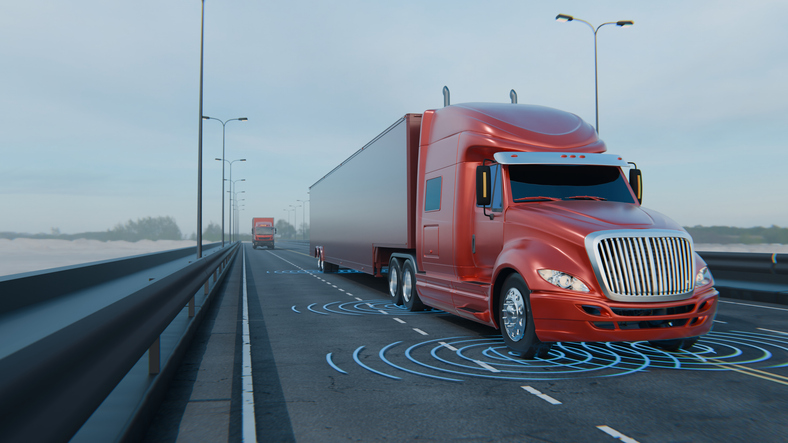Late last year, the CAS sent out a call for essays exploring the topic of the intersection of actuarial science and artificial intelligence (AI). The aim was to seek insightful perspectives that delve into the challenges, opportunities, and ethical considerations that actuaries face in this evolving era. Five essayists responded to the call and you can read their essays in AR and the summer E-Forum. Each brings a unique perspective, and we had the great opportunity to interview them to share their insights on this topic. The essays are linked in the first instance of the essayists’ names.

1. Tell us a little about yourself and how you currently use AI in your work.
Ronald Richman (RR): I’m the chief actuary of Old Mutual Insure, a large P&C firm in South Africa. I use AI in several different ways: as a coding assistant when writing R or Python code, to help create meeting minutes and to critique written work outputs. We also use several machine-learning (ML)/AI-inspired processes in our review work, for example, running many different reserving models and selecting the best of these based on out-of-sample performance.
Paul Kutter (PK): I am currently the senior director of actuarial and data science at Citizens Property Insurance Corporation, Florida’s residual property insurer. Currently, I am heavily involved with predictive modeling, pricing, catastrophe modeling and geographical information systems at Citizens. How I currently use AI in my work depends on what is meant by “AI”. I use a variety of predictive models; however, my use of deep neural nets is more limited. We’ve started some tests on large language models, and I am a member of an inter-departmental team focused on AI governance.
Betsy Wellington (BW): I am retired from company work but take occasional consulting work. Throughout my career, I’ve worked in reserving, national accounts pricing, reinsurance, and medical professional liability. Just before retirement, I did consulting work (mostly with Swiss Re) for 12 years, followed by employment with Swiss Re for six years. During the pandemic, I enrolled in a data science bootcamp, which helped my team and me develop an underwriting pricing model that directly incorporates web-based data. I have since been learning and developing more applications to streamline actuarial data analytics.
Sergey Filimonov (SF): I am the CTO at Three Sigma, a startup that uses AI to analyze insurance regulatory filings. Previously, I worked closely with research scientists to develop and maintain ML models designed to optimize production at Honda. At Three Sigma, we build AI tools as well as use them — tools like GitHub Copilot and ChatGPT are extensively utilized in our development, and we find them invaluable. For example, we use GitHub copilot to easily make changes to our front end while only having limited typescript experience, to writing tests for our back-end code. It’s a huge asset.
Mario DiCaro (MD): I’ve been at Tokio Marine HCC for the past 11 years and lead the capital modeling and predictive analytics teams here. Prior to HCC, I was at URS (a capital modeling software company), Towers Watson, and Tokio Millenium Re. We are actively developing AI tools for others to use, and I use AI on a daily basis such as for my own coding needs and research.
2. What regulatory or ethical considerations are associated with integrating AI into insurance practices?
BW: The experiences that people have had using ChatGPT have revealed that the programmer’s own biases can enter into the AI results. That is going to be a clear problem with AI solutions. Even when we want to develop a web-scraping technique to get data and then analyze it, the programmer or actuary is the one determining the parameters for the web-scraping. This by itself introduces biases into the process.
MD: In terms of pricing, the variables used are of supreme importance. With AI, particularly neural net-based models, you don’t really know which variables are used for the predictions. You just know which ones were thrown into the machine. Current regulatory practices make it so the benefits of using such models outweigh the costs. AI will revolutionize other areas and processes such as automating workflows, improving coding practices, documentation, information retrieval and trend analysis.
PK: There are probably too many considerations to list here. As a model becomes more complicated, its performance tends to depend more strongly on the data used to calibrate it. These new deep neural nets powering computer vision and natural language processing are extremely flexible, having billions or even trillions of parameters. There must be enough training data to optimize all those parameters, and then future data must be similar enough to the training data for the parameters to be reasonably optimal for the new data, too.
RR: There are several considerations. First is explainability and transparency. AI models used in actuarial work should be understandable to comply with professional standards. Next, AI models may inadvertently lead to bias and discriminate against certain protected classes, so actuaries need to ensure models avoid unfair bias and indirect discrimination. Lastly, the results of AI models should not lead to unfair pricing or limited access to necessary insurance products for consumers, so fairness and consumer outcomes are an important consideration. Actuaries have an ethical obligation to maintain up-to-date knowledge and skills related to AI techniques to ensure their competent application; this will ensure that the actuarial value proposition will be strong in coming years.
SF: It’s critical to choose the appropriate use case for AI. LLMs (large language models) are black boxes and how they work is an open research question. As a result, it’s critical to use them in areas where verifying their output accuracy is possible. It’s also valuable to ask what is the cost of being wrong? LLMs are stochastic and sometimes they will make mistakes, so it’s important to quantify the potential impact of those mistakes. With that said, humans also make mistakes, so it’s important to compare LLMs to human accuracy, not “perfect” accuracy.
3. How is AI reshaping traditional actuarial roles such as pricing and reserving? What skills do future actuaries need, especially in the context of AI and automation?
SF: An educated guess: AI will likely increase the level of abstraction at which actuaries operate. Interpersonal skills will be more valuable than ever. Actuaries will have access to a suite of “assistants” specializing in different tasks. In addition, specific skills to produce a baseline familiarity with LLMs will be very useful. LLMs are stochastic and working with them is a fundamentally different paradigm since similar inputs can return very different outputs.
PK: More sophisticated models continue to become more available. I have in mind those models that work similarly to generalized linear models but incorporate automatic variable selection and transformation (such as gradient-boosting machines), or automatically adjust their flexibility based on data (such as regularized generalized models or mixed models). These newer deep neural net-based models also seem poised to allow actuaries better access to unstructured data. A skill needed could be eventually learning a full programming language, such as R or Python.
RR: AI can enable the building of large-scale predictive models across multiple lines of businesses, enhancing the credibility of assumptions. It can also incorporate new data sources (e.g., telematics) directly into pricing models, enabling more personalized and granular risk assessments. Finally, AI can streamline and automate routine tasks, allowing actuaries to focus on higher-level strategic decision-making.
To thrive in the evolving landscape of actuarial science, both now and in the future, actuaries will need to develop a comprehensive skill set. This includes knowledge of machine learning, deep learning and AI methodologies, and their specific applications within actuarial contexts. Proficiency in programming languages, such as R or Python, is essential for effectively implementing and manipulating AI models. Additionally, actuaries must be able to adapt AI models to ensure compliance with professional and regulatory requirements.
BW: I believe it is important that actuaries become trained in the methodologies used to create an AI model and to use AI in their methods. This is a normal progression of the actuarial profession. I know in my 30 years in the field, I have gone from learning Fortran on punch cards, PL/I and SAS to becoming an expert in Lotus 1-2-3. Over the last 15 years, actuaries have become very reliant on Excel because it is easy to use to create models and run analyses. However, there is now so much more technology available that can make our jobs more efficient once we get over the learning curve of the new technology.
MD: The skill actuaries most need is awareness. Second, they need to use it for research and coding assistance. Then they can start to learn how to use it to improve the work they deliver. As AI is trusted more and more by people, it will take over areas such as reserving. If you are a reserving actuary, you should be learning how to use AI tools in your processes. Pricing is trickier mainly because of the regulations around allowed variables. So, in that space AI will help underwriters research and digest information at speeds completely unheard of.
4. How can AI be applied to areas such as operations, underwriting, or fraud detection within the insurance domain?
RR: Anything involving text is currently a natural target of AI automation, whether processing insurance schedules, making sense of risk engineering reports, or drafting communications to policyholders. Emerging AI capabilities, such as the ability to review and draw conclusions from images, videos and sound files offer promising solutions to automatic damage quantification and loss adjusting, as well as review of customer communications to ensure compliance with regulation.
PK: My understanding is that there is great potential to use these newer deep neural net models to automate (at least partially) parts of operations, underwriting and fraud detection. Examples might include identifying property damage from photos, summarizing emails, etc. I am unsure whether these models will ever be accurate enough that they do not require review from a person. But even if they have to be reviewed, they should be able to speed up the process.
SF: AI can be applied to operations, such as intelligent email routing, matching claims to policy coverage, ingestion of loss assessors’ notes, and new loss control measures that are currently too expensive to deploy at scale.
Examples of how AI can be applied to underwriting include: incorporating new data sources, pre-extracting information from documents, cross-referencing information automatically, and having better research tools for learning about an insured.
In terms of fraud detection, AI can help by flagging inconsistencies and automating human heuristics.
BW: The value of AI technology is that it can run through very large amounts of data quickly. Creative management will be able to see how this technology can help the various functions within the insurance company. But the most important thing is that companies have people who both know insurance and are educated in the technology of AI and how it can be used — before management goes out and hires a department of programmers.
5. Imagine the future of the actuarial profession and risk management products in a world dominated by AI and automation. What changes do you foresee?
PK: My guess is that the major change will be with respect to unstructured data, such as pictures and most text. I think we will start to be able to treat them more like we are already treating structured data. It is unclear to me how much this will improve the accuracy of actuarial calculations, but it seems like we should see some improvement.
RR: I envision many changes. First are “AI-enhanced actuaries,” where actuaries will embrace AI tools and techniques to augment their traditional skillset. Actuaries proficient in AI techniques will be well-positioned to take on leadership roles and drive innovation within their organizations. There will likely be new insurance products as AI will enable the development of personalized and customized insurance products that will cater to the individual policyholder needs and risk profiles. AI and automation will also lead to more efficient operations where it will streamline various aspects of the insurance value chain, from underwriting to claim processing.
BW: I see the actuaries becoming even more important to the insurance industry as the go-between for AI, automation and insurance problems that need to be solved. Because the actuaries do not have incentives for writing business like the underwriters and management do, and they understand the whole insurance product development, they are the ones who have the foresight to see how AI and technology can be used appropriately. This also means that actuaries must keep up with current innovations and that companies need to invest in that training.
MD: Every bot you talk to needs to be connected to old systems built by real people. I’ve been using the LLMs to help with my coding for a while now and I can tell you — right now they will not be able to improve themselves. Far from it. I played a lot of Minecraft when my children were young. Voyager (https://voyager.minedojo.org) is an example of what can happen when you teach a program the ability to learn new skills. Our internal legacy networks are wrapped with many APIs. I think we will build agents that can learn to traverse these APIs with the goal of helping the user ingest information faster.
6. Any parting words to actuaries as we traverse this new landscape of AI in our work?
MD: Don’t be afraid or dismissive. Be excited and get engaged.
RR: I hope actuaries will play a key role in building, maintaining, risk managing and debiasing AI systems. The time for the actuarial profession to incorporate machine learning and deep learning topics into its curriculum is now, so that these emerging opportunities can be acted on by the next generation of actuaries in training. Moreover, ensuring that our more experienced actuaries have great opportunities to learn about these emerging fields should be a priority. ●













